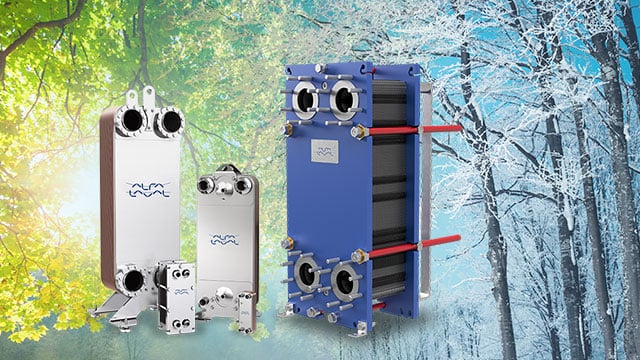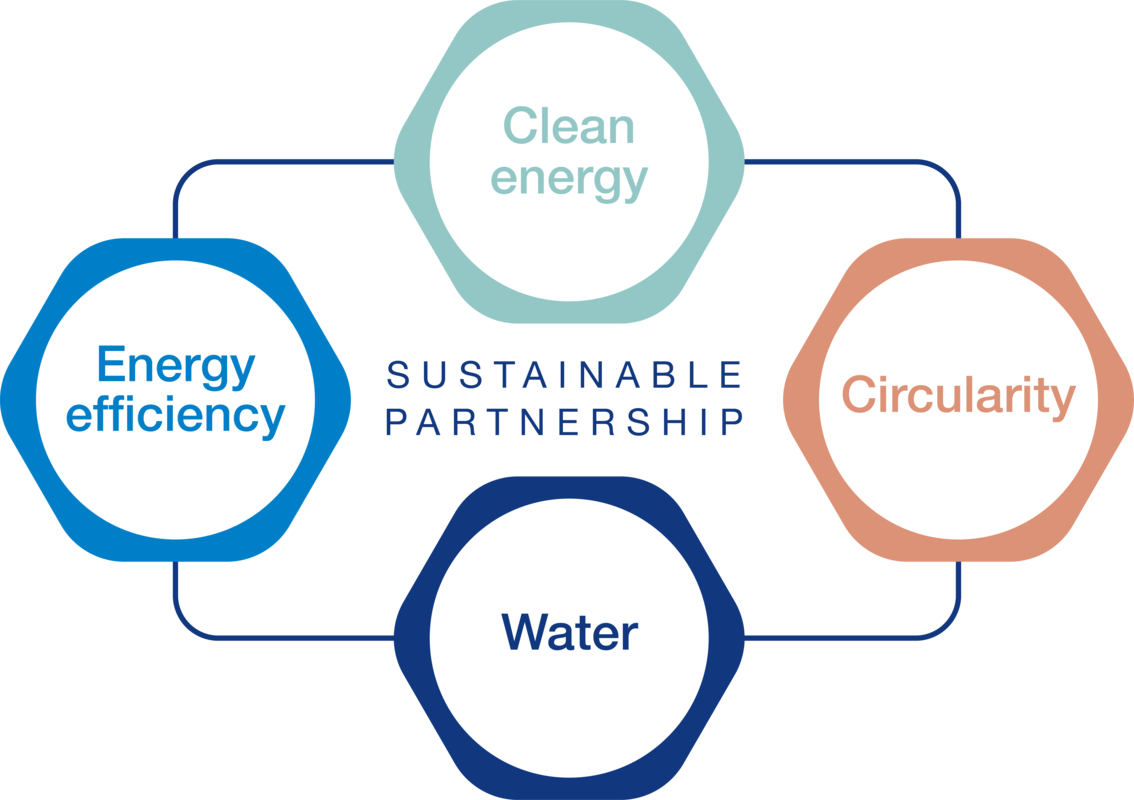Concept Zero™ − The invisible revolution
A heat exchanger is just a heat exchanger, right? But can you really tell the difference? At Alfa Laval, we are committed to playing our part in enabling a decarbonised future. With a pledge to reduce Scope 3 emissions from our upstream and downstream value chain by 50% by 2030, we aim to eliminate emissions from our products—covering everything from raw material extraction to end-of-life. Concept Zero™ is a crucial step on this journey, pushing the boundaries to develop a plate heat exchanger with no fossil carbon emissions.
Together with partners we are making this a reality. Compared to our current ones; it looks the same, you cannot spot the difference. Once ready and delivered these heat exchangers will be installed in industrial processes that matters to most but are basically not visible.
But – this will change the way we run industrial operations. Reducing carbon emissions from both the material we use and the products and processes we run. Making them more sustainable. They can be an important step in the ongoing transition towards a more sustainable society.
Just imagine the impact of heat exchangers like this one, being installed in various industrial processes all over the world. That is why we call this “an invisible revolution”.
This is Concept Zero
This is Concept Zero™
Concept Zero™ is our vision and target to produce the world’s first heat exchanger without any fossil carbon emissions by 2030. It will be a heat exchanger made from low-CO2-emission materials and designed for easy recycling. On this step-by-step journey, we are already acting on our commitment by scaling up the use of low-emission materials in our heat exchangers. The Concept Zero™ initiative is where Net Zero commitments turn into action.
Scaling up the use of low-CO2-emissions materials
Alfa Laval is leading the market by increasing the use of low-CO2-emission materials in its world-leading plate heat exchangers. As the first heat exchanger manufacturer in the world to introduce low-emission steel in our products in 2022, we are now expanding the use of low-emission steel into one of our most sold products—the Alfa Laval T21 plate heat exchanger.
Think global, heat local: Unboxing Concept Zero
Recovered, fossil-free waste heat from the European Spallation Source (ESS) will be connected to the district heating network in Lund, Sweden – and Alfa Laval will supply heat exchangers using emission-free steel from SSAB to ensure the most energy efficient solution.
EcoDataCenter first data center to utilize Alfa Laval heat exchangers that are using SSAB Zero steel
EcoDataCenter to be an industry first in deploying Alfa Laval heat exchangers made using recycled steel produced without new CO2 emissions from SSAB. This deployment signifies a pivotal moment in the ongoing effort to reduce carbon emissions within the supply chain, exemplifying the significance of collaboration.
Alfa Laval and SSAB joined forces producing the first fossil-free heat exchanger
Partnerships are crucial to go that extra mile to find new innovative solutions for accelerating sustainable solutions. Alfa Laval has signed an agreement with SSAB, the global Swedish steel company, to develop and commercialize the world’s first heat exchanger made from fossil-free steel. The goal is to have the first unit made from hydrogen-reduced steel ready for use in 2023.
Want to learn more about Concept Zero™?
Contact us today for more information about Alfa Laval’s plate heat exchangers with a reduced carbon footprint.
Consultant? System integrator?
Are you a consultant? Look here! With expertise from decades of experience in heat exchange, Alfa Laval offers knowledgeable resources for today’s heating and cooling challenges. Discover answers to complex questions on everything from energy efficiency to natural refrigerants, along with helpful tools that make it simpler to find the right technology for your application.

Re-Made to matter
Alfa Laval and Stena Recycling have teamed up create the smart, sustainable and easy-to-use Re-Made to matter exchange programme. This gives us the possibility to recover as much as 100% of the valuable metals found in old heat exchangers. By replacing them with more modern designs, we can also enable efficiency improvements for energy savings as well as a reduced carbon footprint.



